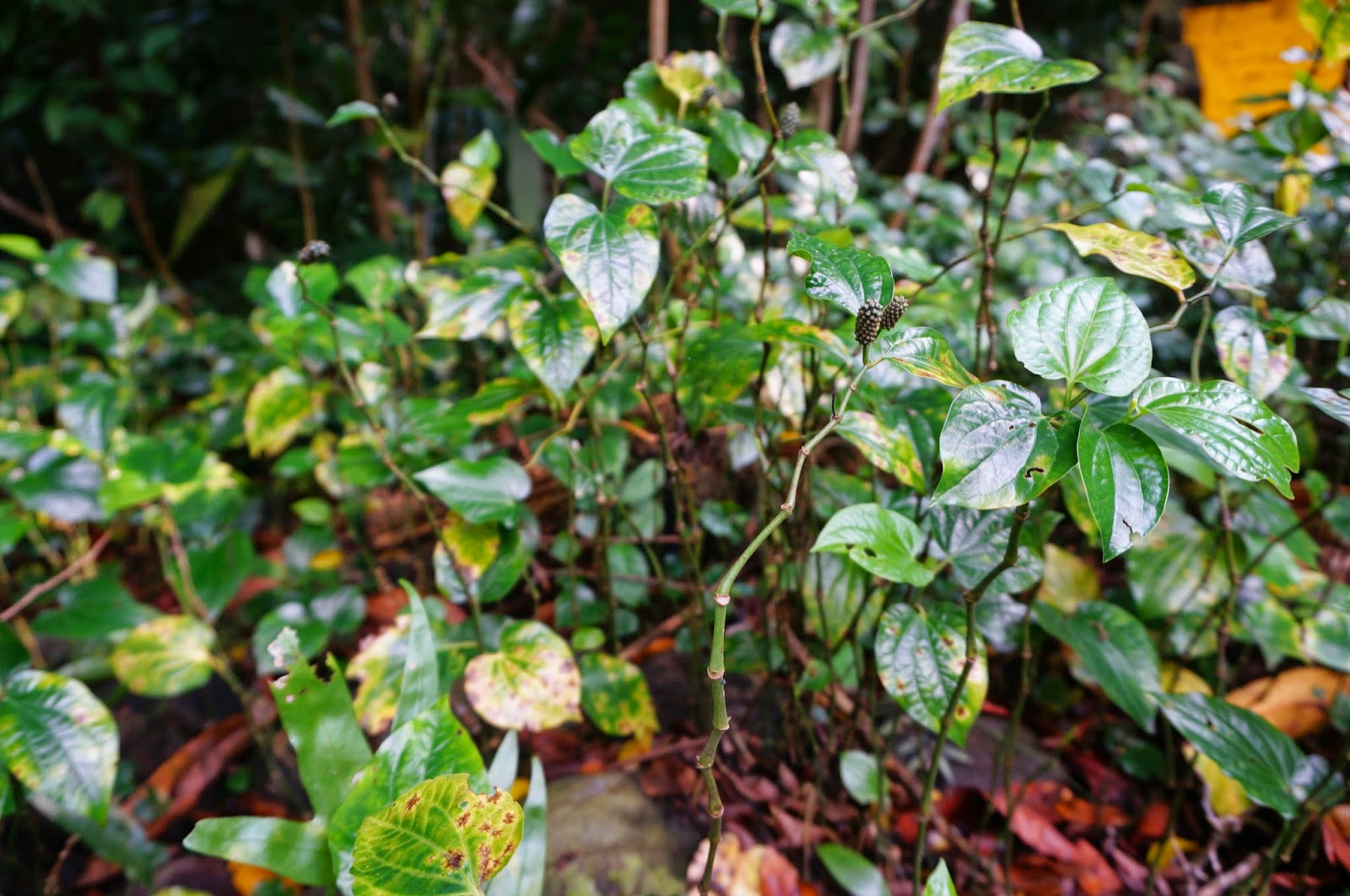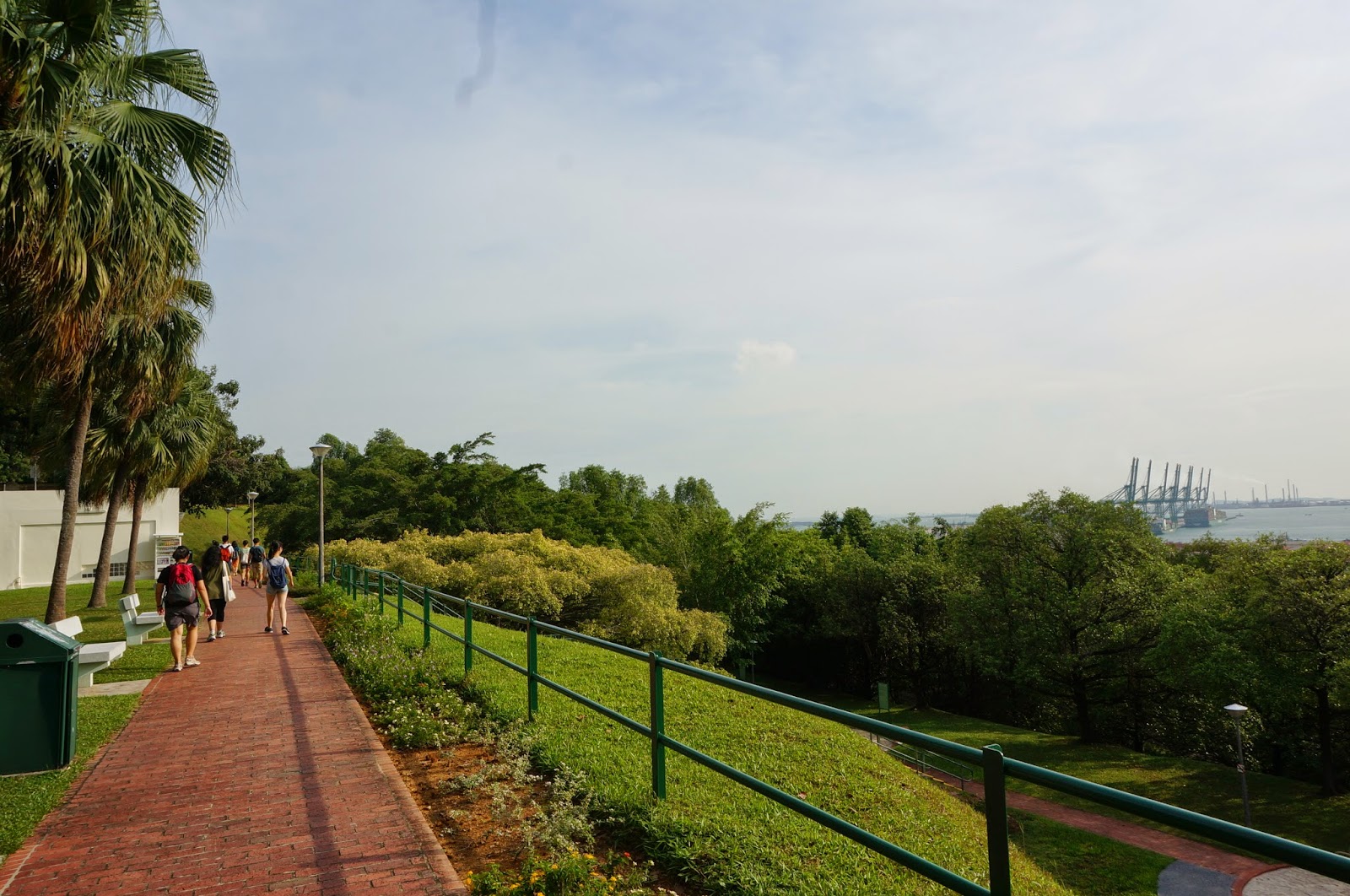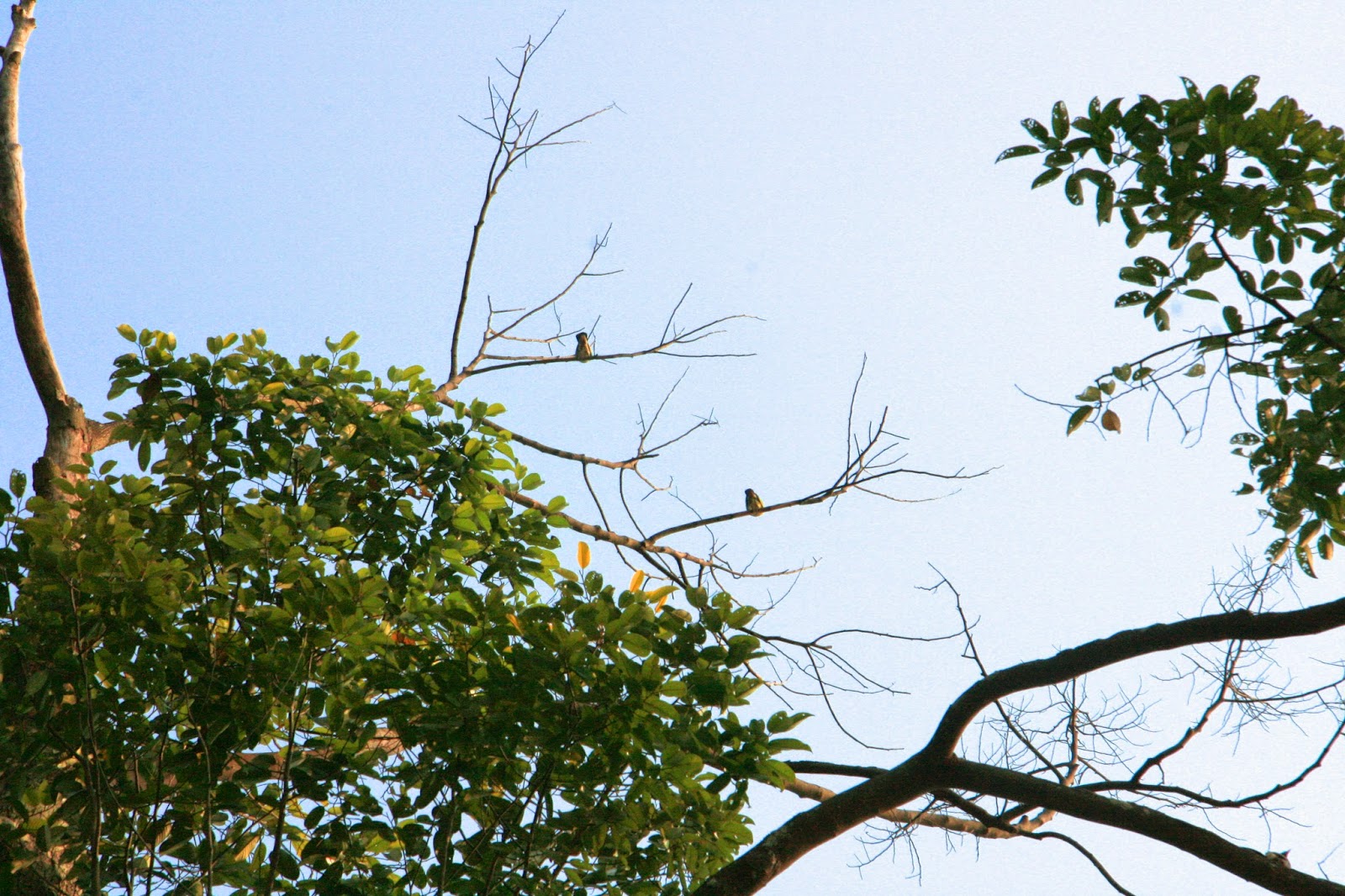Us beans have been busy, and we've been exploring the Southern ridges, graciously guided by our guest nature guide Mr. Pinto. The Southern ridges covers a long stretch over Singapore. For many of us, we can easily identify the Southern Ridges trail via the iconic Henderson Waves, one of the many walkaways and paths that make up the Southern Ridges.
From one place to another, we spotted and saw a great number: Saw towering tembusu trees, smelt the leaves of the eucalyptus tree, peeked at the horticultural gardens at the Hort park and many more. We got to see the hidden landscapes in Singapore, and at times, the view was so different from the usual concrete mass that it seemed as if we were on another island.
Here's some photos from out walk:
The Green Beans
Sunday 9 November 2014
Tuesday 9 September 2014
Green Beans at Pasir Ris Mangroves
Just last week, some of us beanies signed up for an engaging (and thoroughly exciting) walk with the Naked Hermit Crabs in the Pasir Ris Mangroves. The walk was conducted in the late afternoon, and to our luck, it seemed as if all the wildlife in the mangrove were out to meet us.
Bird calls filled the sky, butterflies danced in the rays of the setting sun, and mudskippers basked in the glow of the warm evening. We even spotted a shore pit viper! An adult shore pit viper at that, complete with red eyes and dark grey scales. It was camouflaged and calm amongst the general excitement and silent frenzy of cameras coming in from us on the boardwalk.
Spot the mudskipper!
Male mudskippers impress the ladies with pushups in the mud, flexing their pectoral fins.
(We humans must have learnt it from them)
Spot the shore pit viper curled around a root
For a parting note, here's what Jia le, a fellow Green Bean, had to say about his experience during the walk:
"My memories of Pasir Ris Park were of the many races I had with my friends to the top of the spider web playground. Until recently, I was unaware that a mangrove actually existed in the park.
Hidden behind all the horse riding, cycling and playgrounds, there lay a small 5 Ha mangrove, home to many species of trees and animals, and of course plenty of mudskippers grazing in the mud. Despite playing an important role of housing many endangered species and a protector of coastal areas, the mangrove may still remain transcendent to the public. But perhaps, this is how it retains its mysterious and captivating attributes that only reveal its little intricate ‘features’ like the Shore pit viper or the hermit crabs if one were to look hard enough. It seemed to me that nature likes to play hide-and-seek with us and is rather playful. I guess that is what draws me towards nature."
Monday 21 July 2014
Seen@: Weaver Ants!
The weaver ant gets its name from literally weaving their nests out of leaves, using silk from the young ant larvae (or, as Moffet jokes, using child labour). A good way of identifying these nests is to look for anything from an opaque leaf folded into itself, to a oblong-shaped collection of leaves with white silk holding it together along the seams. The creamy larvae is also considered an important source of protein-rich food for communities that harvest them.

These ants are highly territorial, and do not hesitate to spit formic acid into their bites, so take care not to come in contact with their trial! Don’t worry - formic acid isn’t toxic, unlike the venom from fire ants. It actually has antibacterial properties, and the ants have been harvested and crushed to be used in traditional medicine. (Formic acid also contributes to the weird smell of a crushed ant.)
They are also mimicked by (aptly named) spiders - the ant-mimic jumping spider and the ant-mimic crab spider - and a caterpillar. This mimicry allows the spiders to hunt weaver ants in close proximity without being suspected, and provides protection to the latter.


In case you haven’t noticed, the weaver ants in school have been around for a while - they nest among the vertical greenery on the sixth and seventh levels, and travel between Block A and B via the string of bamboo segments. Yes, you have been walking under them all this time! Here’s the fun part: traditionally, Chinese farmers used them as ‘live pesticide’ to eliminate pests in fruit trees, and encouraged the colony to migrate and expand by placing bamboo poles between the trees. (And we have done that unintentionally.)

Hope you’ve enjoyed learning about these interesting critters - here are a couple of links where you can learn more about them in detail, as well as where we got our information from:
For photos of the mimics:
For Moffet in his element:
//
The Seen@ Team
Saturday 14 June 2014
Seen@: Olive-backed Sunbird (Nectarina Jugularis)
You’ve probably seen them around – these birds resemble hummingbirds and can often be seen feeding on nectar of the morning glories blooming all around school. The olive-backed sunbird can be identified through (obviously) having an olive back and yellow belly – the males are more rarely spotted and have a metallic blue chest.
This tiny bird has adapted from its mangrove home to building nests near, and in our concrete jungle. (Here you see a pair of sunbirds perched on a chandelier.)
It’s understandable how people mistake sunbirds for hummingbirds, as they are physically similar, but here is a funfact: there are no hummingbirds in Singapore!
The sunbirds mate between April and August, so if they do nest at or near your home, let them be! If you’re lucky, you might be able to observe their mating dance, where males show off tufts of saffron feathers at their throat. To photography enthusiasts: try to take photos or videos of them form a distance zooming in. Getting up close may be invasive and disruptive to nesting birds!
If you would like to find out more about this species, we recommend you to check out the Sungei Buloh Wetlands website (here).
p.s. Sungei Buloh is also reportedly a good place for sunbird watching!
p.s.s. here’s how the sunbird sounds like:
/
The Seen@ Team
Ysanne and Kristin
sources:
Thursday 15 May 2014
Save That Pen: Pendamonium Installation on 5th April 2014 (More updates coming soon)
During the day, many visitors interacted with the chromatic curtain of pens and were (literally) hit by the sheer scale of waste. It was indeed heartening to hear unique yet valid interpretations of our installation during a feedback survey conducted by our group members. For instance, one participant commented that she felt that the installation was an apt representation of "the unity" in the various schools present to save their pens.
On the whole, we would like to thank Save That Pen for the opportunity and the memorable experiences we have gained from the project!
In the picture (from the left):
Darryl Cheong, Ang Qing, Jessica Chua, Trina Sim, Kristin Low from SOTA and Hui Shan from Save That Pen.
(not shown)
SOTA: Clara Teh, Annabelle Ong, Jedrek Koh, Nicole Ng
The Green Beans Leaders: Rebecca Lee, Almira Farid, Ang Qing
All Photos taken by SQ Photography © 2014 All Rights Reserved
Wednesday 23 April 2014
A Macritchie Photo Journal from Our First Walk in 8th February
Subscribe to:
Posts (Atom)






























































